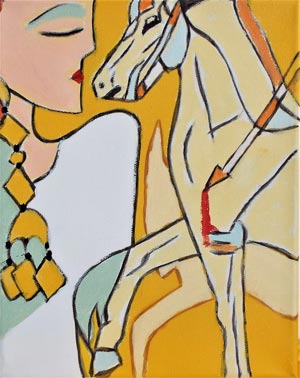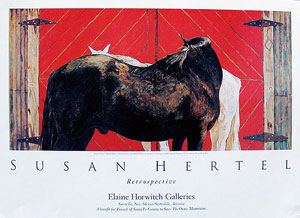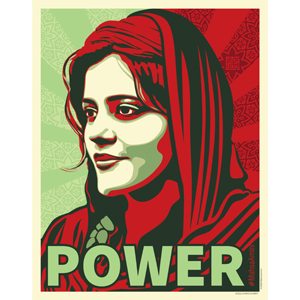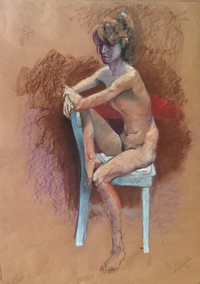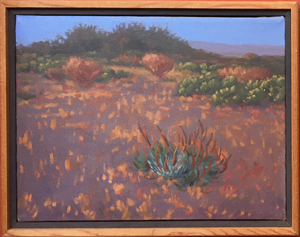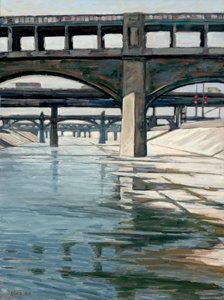
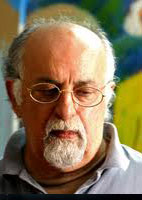 Hannibal ALKHAS (1930 - 2010) was born in 1930 in Kermanshah, Iran. In 1951 Hannibal moved to the United States in pursuit of his education and studied philosophy for three years at Loyola University of Chicago, Illinois.
Hannibal ALKHAS (1930 - 2010) was born in 1930 in Kermanshah, Iran. In 1951 Hannibal moved to the United States in pursuit of his education and studied philosophy for three years at Loyola University of Chicago, Illinois.From 1953 to 1958 he attended the Art Institute of Chicago where he earned his Bachelor's and Masters of Fine Arts. In 1959, after the death of his father, the famous Assyrian writer Rabi Adai Alkhas , Hannibal returned to Iran and began to teach painting, drawing, and art history at the "Tehran School of Fine Arts" for the next four years. During this time he established the successful "Gilgamesh" gallery, the first modern art gallery in Iran where aspiring young artists were introduced.
In 1963 he returned to the United States and taught a "Monticello College" in Illinois where he became the chairman of the art department. In 1969 Hannibal again returned to Iran and spent the next eleven (11) years teaching at Tehran University.
Hannibal's work is deeply inspired by the ancient bas-reliefs and stone sculptures of Ancient Assyria, Babylon and Daric-Persia. He developed and mastered a unique style of painting that seeks to vitalize the historic processes within the passing moment. In his style, using past and present separately and simultaneously whether through content or form, expressions will appear from six thousand years ago, today and the future. Human emotions and thoughts such as love and hate, the exotic and the mundane, victory and defeat, hope and despair, pride and weakness are the subjects he constantly chooses and intermingles with the universal notions of birth, death, hunger, the historical lineage of humanity, mythology, and above all war and peace.
His greed for subjects equals his thirst to experiment with techniques and materials with the different "isms" of art. He might start a work with an abstract mixture of colors and shapes and finish with figurative rendering. Nevertheless, he calls himself a contemporary realist in the sense that he uses form to express that to which it is most suited; abstraction for explosion, cubism for space, surrealism for shape, expressionism for moods or naturalism for documentation of the moment. His achievements include a number of one-man shows, group art exhibitions, and traveling exhibitions in Southern Iran and Israel. Aside from being displayed in his own gallery, a number of his paintings are featured in the Fine Arts Museum and Gallery of Modern Art in Tehran and the Helena d' Museum in Tel Aviv.


